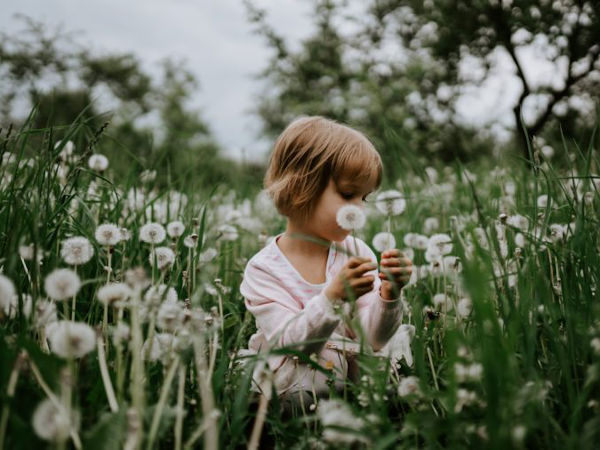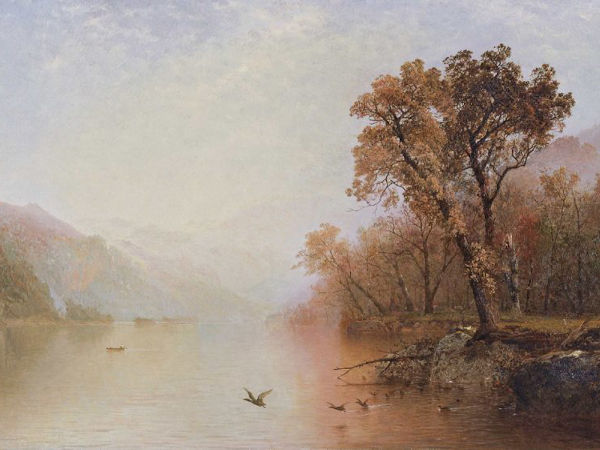The Reluctance of Spirituality in Professional Settings, Healing Humanity, and an All-Pervasive Spirit
I believe that we all come into the world wounded even if we do not want to admit it. Our world, within our collective consciousness, has been wounded by generations and generations of suffering. Even amidst the routines of everyday life, there exists in our subconsciousness a general layer of pain. However, poignant moments appear when suffering becomes awareness and beauty shows itself as wounds heal. But this beauty that can heal a society’s greatest wound must come from something even greater than society itself.
This post is an excerpt, with edits, from Chapter 4 of my PhD Dissertation “Nature, Self, and Being in the World.”
Poignant moments happen when pain meets beauty
Using the word poignant as the framework for my PhD research had sparked both curiosity and confusion from those around me. My initial intention in using the word was to inspire evocative emotions from significant memories of landscapes in order to have a discussion about the power of landscapes. However, poignant often comes with elements of sadness. And sadness is usually an unwelcome emotion.
But after much consideration over the idea of sadness, I came to the conclusion that the connection between poignancy and sadness is important. Pain is a significant part of human existence. Poignant moments that arise from difficult life experiences have elements of pain. In fact, the word poignant has been associated with something sudden and painful since the 14th century. The etymology of the word originates from the Latin word pungere, meaning to prick or pierce. Therefore, poignant is often used to describe scenarios that are beautifully painful.
Although the combination of beauty and pain is somewhat of an oxymoron, if we consider pain as the suffering that life offers for growth, the beauty of what’s poignant can find its way in as a type of healing process.
Denying pain means denying the poignant
According to Joanna Macy (1995), nobody is “immune” to the pain of the world, but to embrace woundedness is difficult. For the most part, humans desire happiness and try to avoid sadness. But sadness is not the only emotion that is habitually denied in our society. I’d say that emotions, in general, were never fully welcomed as part of modern human civilization.
Since the Middle Ages shifted into the Renaissance, the Western world has prized the thinking mind over sentimentality. For only a relatively brief period in the last 600 years or so of modernity has emotionality prevailed over reasoning in a major cultural movement (i.e., Romanticism from c.1770-1850). Not surprisingly, the fascination of nature also accompanied this time of emotional exploration because feelings are part of human nature.
However, even if the mind is in control, that does not mean emotions are non-existent. Andy Fisher (2013) suggests that instead of feeling pain, humans often deny or repress it. A society of humans with repressed emotions becomes nihilistic and loses its ability to participate in authentic culturing. Accordingly, to Fisher, “the more our living and feelings are blocked, the more we are estranged from our own bodily-felt nature, the more does the aggression within the life force press up against this repression” (88).
In a patriarchal-leaning society, emotions, nature, and femininity are exiled together, and thus, nature gets “stripped of her authority” and becomes “a fictive creature that disguise[s] humanity’s own hidden desires and inclinations” (Richards 2002, 404). This paradigm of inner and outer nature has dire consequences.
As Fisher notes, there is absurdity to how contemporary society treats mental disorders. That is, having individuals appear at psychotherapist offices to get analysed for concerns over their independent life stories and traumas while the social forces that brought them there continue to create violence, destruct the biosphere, and perpetuate the supply of more wounded souls.
This cycle of collective social violence almost seems inevitable. But for me, poignant moments are the moments when suffering becomes awareness (and perhaps even absurdity), and when beauty shows itself as wounds heal. However, beauty that can heal a society’s greatest wounds needs to come from something even greater than society itself.
If creation, destruction, intimacy, and hate are considered parts of a greater cosmological structure, then the pain and beauty of life can co-exist together.
A reluctance towards spirituality
To consider a greater cosmological structure that consists of both pain and beauty, humanity’s relationship with this structure must also be considered. Therefore, asking the question, “what does it mean to be human?” is fundamentally also a spiritual question.
According to Macy (1985), the challenges of humanity’s collective wounding cannot be overcome without a spiritual practice. The desire to heal, personally or collectively, in order to recover the incompleteness of life caused by the detachment from nature, including human nature, is in itself a spiritual endeavour (Fisher 2013). But in a fact-based society, there is generally a reluctance towards spirituality.
I find this reluctance bizarre, but in my research and in other areas of professional or academic interaction, spirituality often comes with a clause.
When I conducted interviews for my PhD research, I mentioned the word spirituality in a sentence that defined landscape as “a phenomenon that intersects materiality, consciousness, and spirituality.” I also mentioned that “landscapes tell a story of a sacred human-world relationship found in nature.” I assumed that this premise helped build rapport with certain participants because it aligned with their spiritual practices, but for some others, it seemed more like a disclaimer was necessary between us.
I had a research participant say, “I may not be very spiritual.” Another said, “I think that maybe in the British nature, that there’s a kind of pragmatism that has…that’s not easily led into spiritual areas.” One other participant said, “I’m not terribly religious. That didn’t have much impact on me.”
Confusion and misunderstandings
The hesitancy towards discussing spirituality in professional settings stems from misunderstandings.
In a qualitative research study with physicians who care for stage IV cancer patients, Megan Best, Phyllis Butow, and Ian Olver (2016) discovered that although “routine spiritual care would have positive impact on patients” (1), physicians are reluctant to discuss spirituality in their work due to: 1) patients and doctors confusing spirituality with religion; 2) peer pressure from colleagues who were not in favour of the topics; 3) the fear of forcing their beliefs on others; 4) institutional influences; or 5) historical factors.
Similarly, a survey to American adults on why they were reluctant to discuss faith showed that people avoided the topic either because religious conversations seemed to create arguments due to the subject’s politicisation, they did not care or believed they had enough knowledge on the subject, or they did not want to be seen as “religious,” “weird,” or “fanatic” (Barna Group 2018).
In the field of social work, Michèle Butot (2005) found that while many practitioners considered themselves spiritual, critical social work literature has not embraced a spiritual framework. Butot suggests that a dialogue on spirituality can reframe and emancipate the oppressive hierarchies that critical social work attempts to dismantle.
Redefining spirituality
Best et al. (2016) refer to spirituality as “the way people engage with the purpose and meaning of human existence” (1). They also note that these views shape people’s personal values. Therefore, how we interpret what it means to be human and how we define the human-world-cosmos relationship, determines how we participate in the world as humans.
We need to bring more clarity to what spirituality entails in professional and academic settings. We need an interpretation of spirituality that speaks of both interconnectedness and individuality so that societies can find leeways for healing.
So what’s my definition of spirituality? First, spirituality is the acknowledgement of a power, life force, mystery, or unseen element within or encompassing the connections and relationships between entities in the world, including people, other organisms, things, and events. Second, this force is meaningful to the individual who acknowledges their interconnectivity with the world.
One landscape architect I interviewed had said, “spirit is all-prevailing in all areas regardless of what you call it.” I agree, because spirit immediately becomes pervasive once an individual recognises and makes meaning of their interconnectivity with the world.
Therefore, poignant landscape experiences are spiritual because they are dependent on interconnections and meanings. To feel the poignancy of a landscape is to allow one’s self to be moved by the pain and beauty of the world.
The spirituality of landscapes
Certain poignant landscape experiences are geologically specific. A scientific rationale might be able to give details to the characteristics of a space, but rationale may not adequately explain why certain repressed emotions are triggered in a landscape. For example, one of my research participants shared how the sacred Tibetan mountains triggered an inexplicable spiritual challenge for him. His emotional challenge was a personal one, but it was also an existential challenge that expressed the impact of a human being in relation to something cosmological found in a landscape he experienced.
Being in a spiritually charged landscape in some way sounds as if magic occurs and an emotional switch turns on from an alchemical composition that lays dormant in a place. Merleau-Ponty (1945) would call this phenomenon the “chiasm” of bodies, living and non-living. Physicist Karan Barad (2003) would call the experience an ontological unit of phenomenon that arises from “intra-acting agencies.” Some people would just call the phenomenon “spirit”.
Although Kant’s ([1790] 1952) theories claim that reason triumphs over nature in sublime experiences, the specific effect in an spirituality charged landscape is that there is no escape from nature: nature wins; human nature (i.e., emotions) responds. In a poignant experience that acknowledges an all-pervasive spirit, reason is the awareness of the connection between human nature and the nature of the world.

We interpret the world through our language
Another landscape architect shared with me a poignant landscape experience from a hiking trip in Cape Breton. When I asked him why the experience was so memorable, he told me that growing up as a Japanese child in post-war Toronto was rather emotionally traumatizing. Very few experiences had such (positive) impact on him, and this experience was one of them.
Like the other participant’s encounter on Mount Kailash in Tibet, the effect of his experience in Cape Breton was also influenced by the overcoming of pain and grief. Part of this overcoming was found in a situation that alluded to something divine—in his words, a “church-like experience.”
The phrase “church-like experience” could be interpreted as religious reverence or a spiritual encounter. I interpret the phrase as an allegorical reference to a deeper realm of experience. Since the confusion between religion and spirituality is one of the most common reasons for the hesitancy to discuss spirituality, a personal distinction between the two terms is important.
Definitions are communication signposts, not absolutes
Interpretations of words between people can overlap and diverge. Re-interpretations are possible and necessary if change is desired. For instance, William James ([1902] 2009) described religion as “the feelings, acts, and experiences of individual men in their solitude, so far as they apprehended themselves to stand in relation to whatever they may consider the divine” (27). I would consider James’ discussion about religion to actually be about spirituality.
Nevertheless, James argues that religious feelings should not be judged differently than other sources of feelings. He writes, “religious happiness is happiness. Religious trance is trance.” (22). I re-interpret his argument as any kind of “happiness is happiness,” and any kind of “trance is trance,” since all feelings are part of human nature, and also part of a system that is much greater.
Therefore, the stigma around spirituality is founded in misunderstandings. These misunderstandings or flawed interpretations deny our chance of collective healing.
To heal our collective social traumas, we cannot tip-toe around spirituality or be afraid of talking about our existence as human beings.
Or at the very least, we need to learn how to feel and express our pains, our hopes, and our belief in the beauty of the world.
References:
- Barad, Karen. 2003. ‘Posthumanist Performativity: Toward an Understanding of How Matter Comes to Matter’. Signs 28 (3): 801–831.
- Barna Group. 2018. ‘Why People Are Reluctant to Discuss Faith’. Research Releases in Culture & Media. 14 August 2018. https://www.barna.com/research/reasons-for-reluctance/.
- Best, Megan, Phyllis Butow, and Ian Olver. 2016. ‘Why Do We Find It So Hard to Discuss Spirituality? A Qualitative Exploration of Attitudinal Barriers’. Journal of Clinical Medicine 5 (9). https://doi.org/10.3390/jcm5090077.
- Butot, Michèle. 2005. ‘View of Reframing Spirituality, Reconceptualizing Change: Possibilities for Critical Social Work’. Critical Social Work 6 (2). https://ojs.uwindsor.ca/index.php/csw/article/view/5666/4630.
- Fisher, Andy. 2013. Radical Ecopsychology: Psychology in the Service of Life. 2nd ed. New York: SUNY Press.
- James, William. (1902) 2009. The Varieties of Religious Experience: A Study in Human Nature. E-Book. University of Adelaide.
- Kant, Immanuel. (1790) 1952. The Critique of Judgement. Translated by James Creed Meredith. Oxford: Clarendon Press.
- Macy, Joanna. 1995. ‘Working through Environmental Despair’. In Ecopychology: Restoring the Earth, Healing the Mind, edited by Theodore Roszak, Mary E. Gomes, and Allen D. Kanner. San Francisco: Sierra Club Books.
- Merleau-Ponty, Maurice. 1945. Phenomenology of Perception. Routledge Classics. London: Routledge.
- Richards, Robert J. 2002. The Romantic Conception of Life: Science and Philosophy in the Age of Goethe. Chicago: University of Chicago Press.






